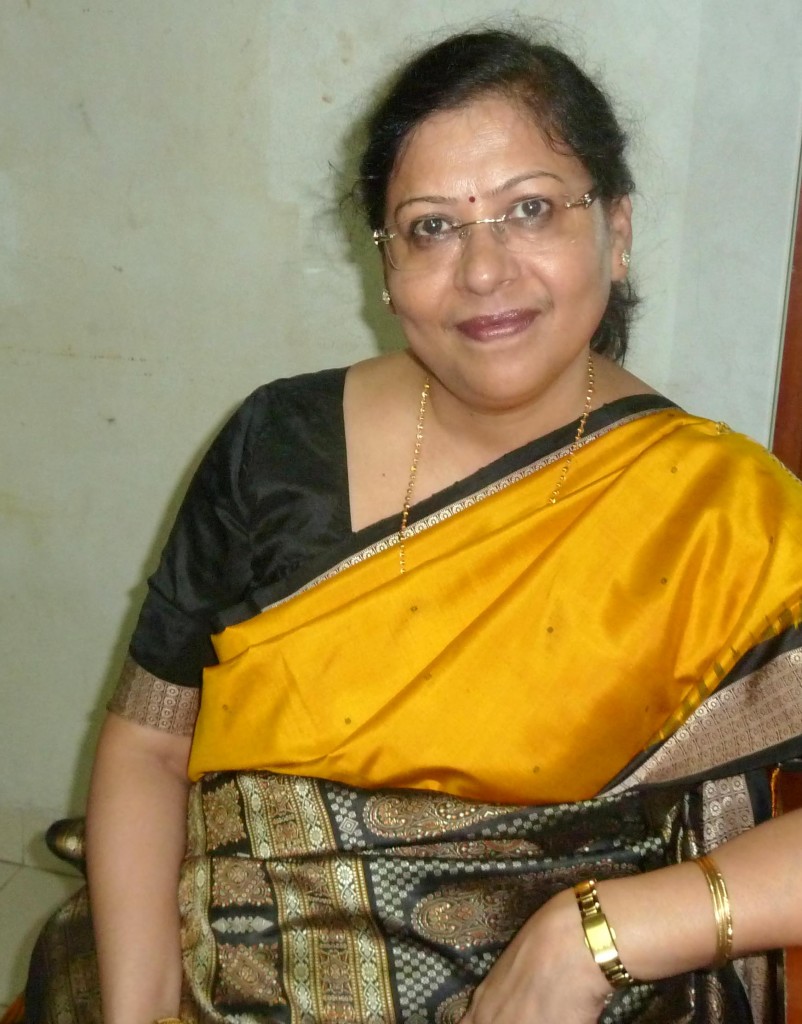Shubra Guha Performance in Jakarta – Gandhaar
Vidushi Shubra Guha, one of the foremost female vocalists in India was recently in Jakarta and I had the opportunity to do a short interview with her.
Subhraji possesses an extremely melodious voice and a vast repertoire of ragas and compositions. She has been trained by Shri Satish Bhowmik, Pandit Sunil Bose, Pandit KG Ginde, Pandit DT Joshi, and Pandit Vijay Kichlu. In addition to classical singing, she is expert in various semi-classical styles such as thumri, dadra, kajri, tappa, etc. She is a regular artiste of the AIR and television and has given memorable performances all over India and abroad.
Though belonging to the Agra Gharana, which is synonymous with the prowess and masculinity of Aftab-e-Mousiqui Ustad Faiyaz Khan, Subhra has successfully carved a niche of her own with her feminine charm. Khayal singers are generally classified according to their gharanas. A gharana is a school or style of singing with definite characteristics that come to be identified with the gharana.
She has studied at the unique Sangeet Research Academy in Calcutta, and is currently a Guru at this institution.
On being asked on her motivation/inspiration be a musician, she attributes her interest to her father. ‘I am not from a musical family. My father was very interested in music and wanted all children to learn music. Despite our initial hesitation and childish impatience with the long hours of practice, we persevered due to his discipline.’ said Shubraji. Then as her musical knowledge increased, music became her life’s purpose. This was her realization at the young age of 15 and she has not looked back, since. ‘One lifetime is not enough‘ she says ‘for learning all that there is to learn in music.’
Shubraji has a great collection of Indian classical music and she furthes says that ‘library toh mein khud hoon‘ ( I am a library). ‘Music is an oral tradition that you have to learn from your guru’s mouth’ she further adds. The Sangeet Reasearch Academy is also in the process of compiling a large digital resource and knowledge base for scholars and students.
A popular belief is that 6 Raga and 36 Ragini are the sourse for all Ragas, which could be upto a thousand. However, currently only 50 -60 are sung. Raga Bhairavi is her favorite as it is evergreen or ‘sadabahaar’.
Shubra Guha is well known for her Thumri she explained that the Khayal is the base of the thumri and every composition is based on Raga and sung as per Khayal or imagination. A beautiful song is the perfect amalgamation of technique and emotion.
Shubra Guha in conversation with Poonam Sagar
It was lovely talking to her and it was very clear that my knowledge on Indian classical music was woefully inadequate. Some research and reading later:
Raga is the basis of melody, and the term ‘raga’ literally means colour, and so the raga is ‘that which colours the mind‘. An intriguing and abstract concept on music that inducing an emotion or a mood – tranquility, devotion, eroticism, loneliness, pathos, and heroism to name a few. The raga is also a set of rules or constraints that binds a performance, constraints within which a performer is free to improvise.
Indian classical music can be traced to the holy scriptures of the Hindus, the Vedas. It comprises of two basic elements – the raga and the tala.
Fascinatingly, most ragas are specific to time of the day or even a season, in which they are to be performed – the time is generally specified by intervals of three hours and corresponds to the mood that is supposed to be associated with that time of the day. Some ragas, like raga malhar for example, are associated with specific seasons. Time theory of Ragas by ITC Sangeet Reasearch Academy
The Raga is closely tied to the Tala (the rhythm), usually provided by the tabla, a percussion drum, and are often depicted as bolsor spoken words which are then adapted by the tabla player in his playing.
Each rãga is associated with an ascending pattern ‘ãroha’ and descending pattern ‘avroha’.
These notes are classified in a heirarchy based on their importance and the two most important notes lie in two different tetra-chords(half-octaves). The most important note is called the vãdi and the second most important note is called the samvãdi. The raga generally has a characteristic phrase known as the pakad which helps in identifying that raga.
A singer or musician sings or plays the notes in various combinations playing the static compositions and embelishing them and adding improvised parts in between. A typical performance could go on for an hour or even two. The success of the performance depends on how effectively the musician builds up the desired mood.
Thumri a classical form was born in the Moghul courts and its famous exponent was Nawab Wajid Ali Shah or Akhtar Piya as he was affectionately called. While the Raga rules Khayal, it is Bhava (feeling) that governs the rendering of thumri. Thumri allows for greater flexibility and freedom of expression, even for mixing raags in the interest of highlighting a particular mood or emotion. This flexibility has earned for it the name of “light-classical music.”
Podcast: Play in new window | Download




